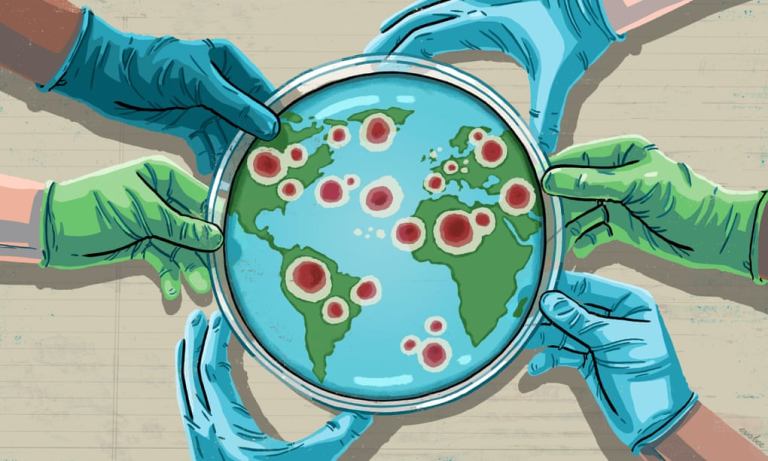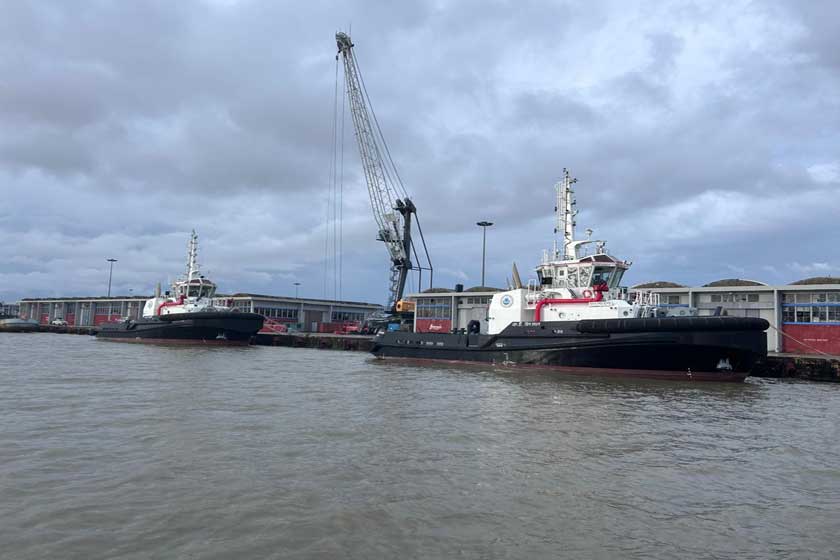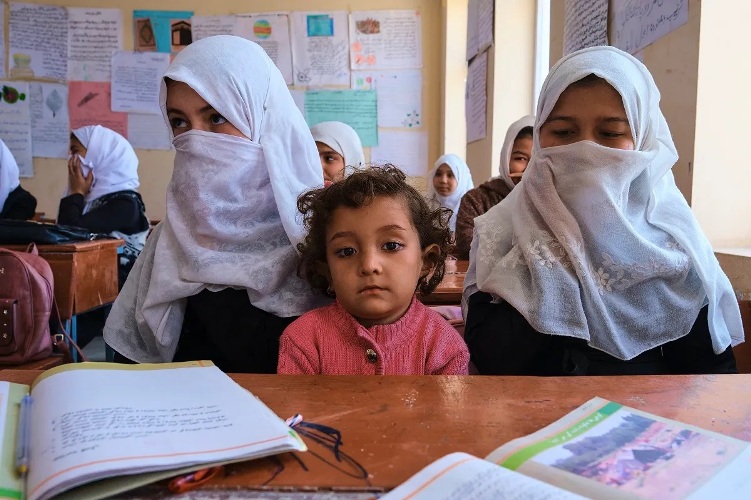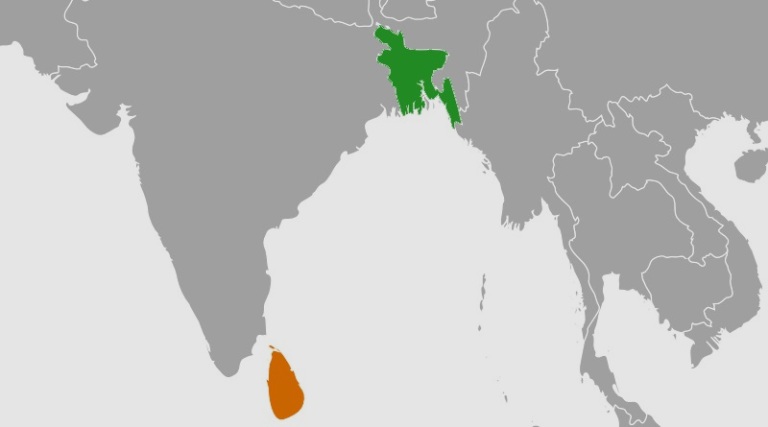
International travel and trade have connected countries and created new opportunities for diseases to spread. COURTESY
Wouldn’t it be wonderful if we never had to face another pandemic? As we reflect on the past year, the words that come to mind are “never again”. Never again should more than 120,000 lives be lost to a contagious virus, a number that would have been unthinkable almost a year ago, when government advisers thought that losing 20,000 people would be a good outcome. Nor should we endure another year of lockdowns, and the pain of job losses and unemployment that followed. And nobody ever wants to see children taken out of school for 21 weeks of the year again, unable to learn in classrooms or see their friends.
But scientists are clear that we will face another pandemic in the future. Most agree the question is when, not if. In 2018, I gave a talk at the Hay festival outlining a scenario that was loosely based on recent news reports: a farmer becomes infected with an antibiotic-resistant bacterium from a pig in China, spreading this infection through their community and then boarding a plane to the UK. The worrying thing about this scenario is that such bacteria, which evade our antibiotics of last resort, are already upon us. They could yet be the source of a future pandemic.
Or perhaps the next pandemic will be caused by a virus spilling over from animals to humans, much like Covid-19. Recent reports that the first humans have been infected with avian influenza at a poultry plant in Russia give a worrying glimpse of how close we live to such risks. Every time a virus circulates among animals, particularly bats, rodents, livestock and birds, and then comes into contact with humans, there’s a chance it will infect people and lead to human transmission.
Wherever the next pandemic comes from, Britain must think long term about its ability to respond and must ensure it is prepared. Key to this will be working together with other governments to establish robust response systems. Over the past year, the UK has already built many of the structures that will be needed to address a future pandemic. We now have a huge testing capacity, processes in place for fast-tracking vaccine development and protocols for undertaking rapid research in hospitals. But more needs to be done at a global level to ensure we’re truly prepared.
International travel and trade have connected countries and created new opportunities for diseases to spread. This is why we need global surveillance to identify disease risks. Just as we have a weather service, governments should invest in a global virus surveillance network to scan for new pathogens of concern, and identify and mitigate the risks of animal viruses crossing over into human populations. It’s not only new pathogens we should be afraid of, but new variants of existing viruses. Already, we’ve seen variants of the virus that causes Covid-19 arising in countries such as England, Brazil and South Africa, and we could yet see the emergence of a new strain of influenza that leads to a global flu pandemic.
This is why it’s essential for countries to have sequencing facilities to detect and track new strains and assess whether booster shots of vaccines are needed. Not all countries have the sequencing facilities that we benefit from in the UK, and it’s imperative we invest resources to ensure other countries also have the infrastructures that would allow them to rapidly identify and sequence new viruses. The World Bank has a particularly crucial role to play in supporting countries financially, while the World Health Organization should provide technical assistance to build up these core capacities for outbreak detection.
The second crucial area of investment will be in vaccine development. While vaccines for Covid-19 have been developed and manufactured at remarkable speed, we’ll need to be even quicker next time to avoid the case numbers, deaths and restrictions we have all endured over the past year. Developing the vaccine is only half the battle: as recent tussles over limited supplies of the AstraZeneca vaccine have shown, countries will also need to think critically about their manufacturing capacity, and coordinate with other governments to create regional hubs that allow for mass vaccine production and delivery.
We should be applying these principles not just to new viruses, but to those we already know about. Flu epidemics occur every winter and cause an estimated 650,000 deaths across the world each year, largely among young children, pregnant women and elderly adults. Pandemic influenza, which would involve the global outbreak of a new flu virus that evades our immunity, could be disastrous. The 1918 flu pandemic infected roughly one-third of the world’s population and killed 50-100 million people worldwide, while the death rate for 15-34-year-olds was 20 times higher in 1918 than in previous years.
The UK government lists pandemic flu in its national risk register. Yet in planning for a flu pandemic, governments have largely focused on mitigating outbreaks by building enough hospitals to ensure people can access care, rather than on suppressing the spread of a virus while deploying a universal influenza vaccine. Our seasonal flu vaccines are given annually and are informed by expert predictions about which strains will become the most common. As the next big push after Covid-19, the UK should be aiming to develop a single-dose universal vaccine that protects against multiple influenza strains. The first human clinical trial of a universal flu vaccine has already been successfully completed, and now we must accelerate this progress.
Throughout the Covid-19 crisis, many commentators focused on the question of whether or not coronavirus was like seasonal flu. Not only did this misunderstand the unique risks of Covid-19, it also underestimated the danger of a novel flu pandemic. In the future, the UK should treat all pathogens – whether novel influenza or Covid-19 – as threats. In the process of managing Covid-19, we have inadvertently almost eliminated seasonal flu, which shows just how much we can achieve if we needed to suppress dangerous pathogens in the future.
The scientific leaps that have been made over the past year, including the production of multiple vaccines and treatments for Covid-19, can seem like magic. In fact, these advances reflect years of research and training building on the work of previous scientists. Historic breakthroughs, such as the discovery of penicillin in 1928, the polio vaccine in 1961 and the MMR vaccine in 1963, were possible because of the work of multiple scientists, biologists, virologists, geneticists, engineers and mathematicians.
The same goes for the response to Covid-19. The importance of science has never been more obvious, and governments should be pouring resources into the sector rather than pulling back. News that the government plans to cut the budget of UK research funding, which will cost the sector an estimated £1bn and deal a serious blow to science, is particularly concerning. Now is the time to invest in science and research. It’s only by doing this that we’ll be truly prepared when the next pandemic arrives.
*Author, a chair of global public health at the University of Edinburgh, The article published on The Guardian












0 Comments